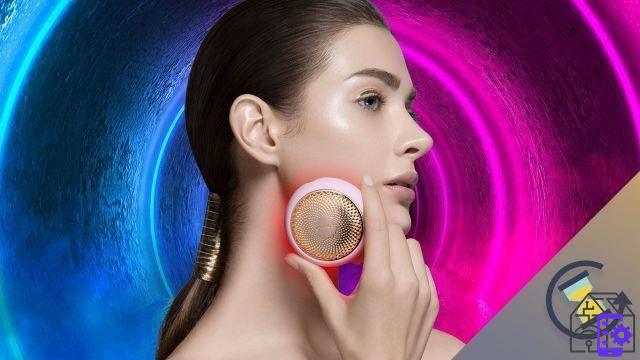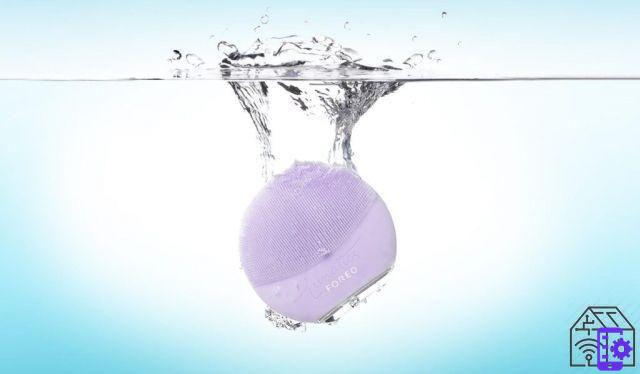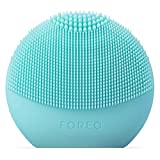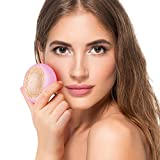
Here we are back to our Monday column with a rather unusual topic, but not too much, for a technology portal. Today we will see how skincare has changed and the evolution that the face mask has had throughout history. From a very traditional herbal pack, this has turned into a real hi-tech product, as the success of Foreo clearly demonstrates.
All the more so, during the lockdown and the COVID-19 emergency, we all had the opportunity to rediscover the beauty of taking care of ourselves. And attention to cosmetics has become one of our main concerns. And perhaps this is precisely the secret of skincare's longevity, namely its great power to make us feel better. But when was skincare really born? And how did we get from Cleopatra's milk baths to Foreo's silicone sponges? Let's find out together.
From Ancient Egypt to Ancient Rome: the origins of skincare
Few things can boast such a long history. And skincare is one of them. Skin and body care has its roots in Ancient Egypt, where doctors suggested the preparation of lotions and ointments to eliminate imperfections or even out the complexion. As you can imagine, there was extensive use of preparations based on natural ingredients. To keep the skin young, for example, women used to prepare a cream based on alabaster, honey, natron and sea salt. And it is always in the realm of the pharaohs that we must search for the origins of make-up. As many of the representations come down to us show, women used to color their lips using a compound based on red ocher diluted with grease or resins.
Yesterday as today, it was the natural elements that helped women take care of themselves. Except that today those same ingredients are refined and prepared according to modern industrial techniques. And in some cases even used with the help of hi-tech tools. This whole process of evolution has experienced a strong push, especially in theAncient Greece, when the ideal of beauty became one of the greatest aspirations of men and women. It is in this moment that skincare makes an important leap, becoming something metaphysical, that it's good for the body but also for the soul. The practice of massages becomes more and more popular, simultaneously with the massive use of vegetable oils such as almond, olive, mint, poppy and sage.
And like body care, Greek women also knew a lot about face masks. Two were the most used treatments: a cream based on sheep fat and honey, and a mask based on clay and other earths, diluted with vinegar or oil depending on the purifying effect you wanted to obtain. Once the ointment was prepared, women used to spread it on their face to be able to take care of their skin. Nothing different from what we do today, if you think about it. Although the in-depth knowledge of cosmetology and the ability to study the needs of our skin undoubtedly makes it more advanced than our ancestors.
But everything still changes in ancient Rome, when for the first time ingredients of animal origin are used in beauty treatments. A detail from which our age shuns, or almost. Yet theempress Poppea it became famous for its habit of using donkey milk in eudermic baths. And like her, many women used to resort to treatments based on swan fat, deer marrow, ant eggs (naturally pounded) and much more. Not quite what we hope to find in our face masks today, but it still gives us an idea of how skincare has changed over the centuries.
Renaissance and French Revolution: the pinnacle of skincare
Many centuries pass between the clay-based wraps and hi-tech cosmetic products. And among these, two in particular seem to really mark the history of skincare for what interests us. The Renaissance, first of all. As it was one of the first periods in which skin care became almost essential for women. And although the techniques used may seem obsolete to you, important steps forward were made in cosmetology. French women, for example, used to take care of themselves by going to bed with their faces covered with raw veal soaked in milk. The Germans, on the other hand, preferred lard rind. And this habit of using elements of animal origin in the beauty routine also continued in the French Revolution.
At the time of Napoleonfor example, milk baths with the addition of chicken or veal broth were very popular. Above all, the secret of self-care seemed to be kept by the ladies of the court, who used to treat themselves to baths embellished with essences, strawberries, barley or orange blossom. Not to mention the face masks based on egg white, flour, benzoin tincture and coconut oil. A habit that does not seem to radically change what we have told you about Ancient Rome, were it not for the fact that between the seventeenth and eighteenth centuries we totally forget about self-care, so much so that we no longer even use water for bathrooms and essential care. A completely forgotten period, given that today skincare and the consumption of beauty products is among the first places in the attention of Italians, and not only.

Foreo, how skincare becomes hi-tech
From natural face packs to cloth masks, the transition was relatively straightforward. Quite different, however, was the technological evolution of skincare, which we can count as quite recent. Foreo, our Swedish brand that we all know, was born only in 2013, as a start-up intent on revolutionizing the world of beauty. A goal that, in her own way, she also managed to achieve.
The idea comes from the CEO Filip Sedic, who launched on the market seven years ago "Luna“, The first in a long line of facial cleansing massagers made of hygienic silicone. By exploiting the potential of technology, and of the Foreo for You App, this device is able to deeply cleanse the skin, adapting perfectly to everyone's needs - recently, in fact, Luna3Men was also launched -. In 2018, the Swedish brand also gives a new shape to skincare, launching UFO, a hi-tech device that allows the application of UFO-activated face masks.
But it will surprise you to know that Foreo is not the only brand that makes beauty hi-tech. In Germany, for example, the brand Beurer launched the FC 96 Pureo Intense Cleansing Facial Brush for facial cleansing. And HoMedicsinstead, he worked intensely on the face brush Purity+, able to analyze the needs of your skin and devise an ideal skincare for your needs thanks to a dedicated App. And we could continue indefinitely to tell you about the technological devices for self-care that have been successful especially during the lockdown, when we had the opportunity to rediscover how beautiful it is to dedicate ourselves to ourselves. So much so that the sector market has had a 20% increase in the past months. And that now we are no longer talking about skincare, but about skintech. So, what do you think? Has something changed or not?
 FOREO LUNA FOFO - Intelligent brush for cleaning the ...
FOREO LUNA FOFO - Intelligent brush for cleaning the ...
- 100% Personalized Skin Care: Foreo gives you the key to softer, radiant-looking skin under the ...
- Smart Face Brush and Skin Analyzer: Luna Fofo is a multifunctional facial cleansing device ...
- Keep it clean - The results are added to your personal profile after each reading to create a ...
 FOREO UFO 2 Pearl Pink, super facial treatment in 2 min, ...
FOREO UFO 2 Pearl Pink, super facial treatment in 2 min, ...
- HEATING TO SOFTEN AND IMPROVE Thanks to the heating function 5 times faster, gentle and ...
- COOLING TO TONE AND DEFLATE UFO 2 uses the best trick in home care to shrink ...
- STIMULATION WITH FULL SPECTRUM LED LIGHT With 8 LED lights, UFO 2 adds maximum power to treatments for the ...




























